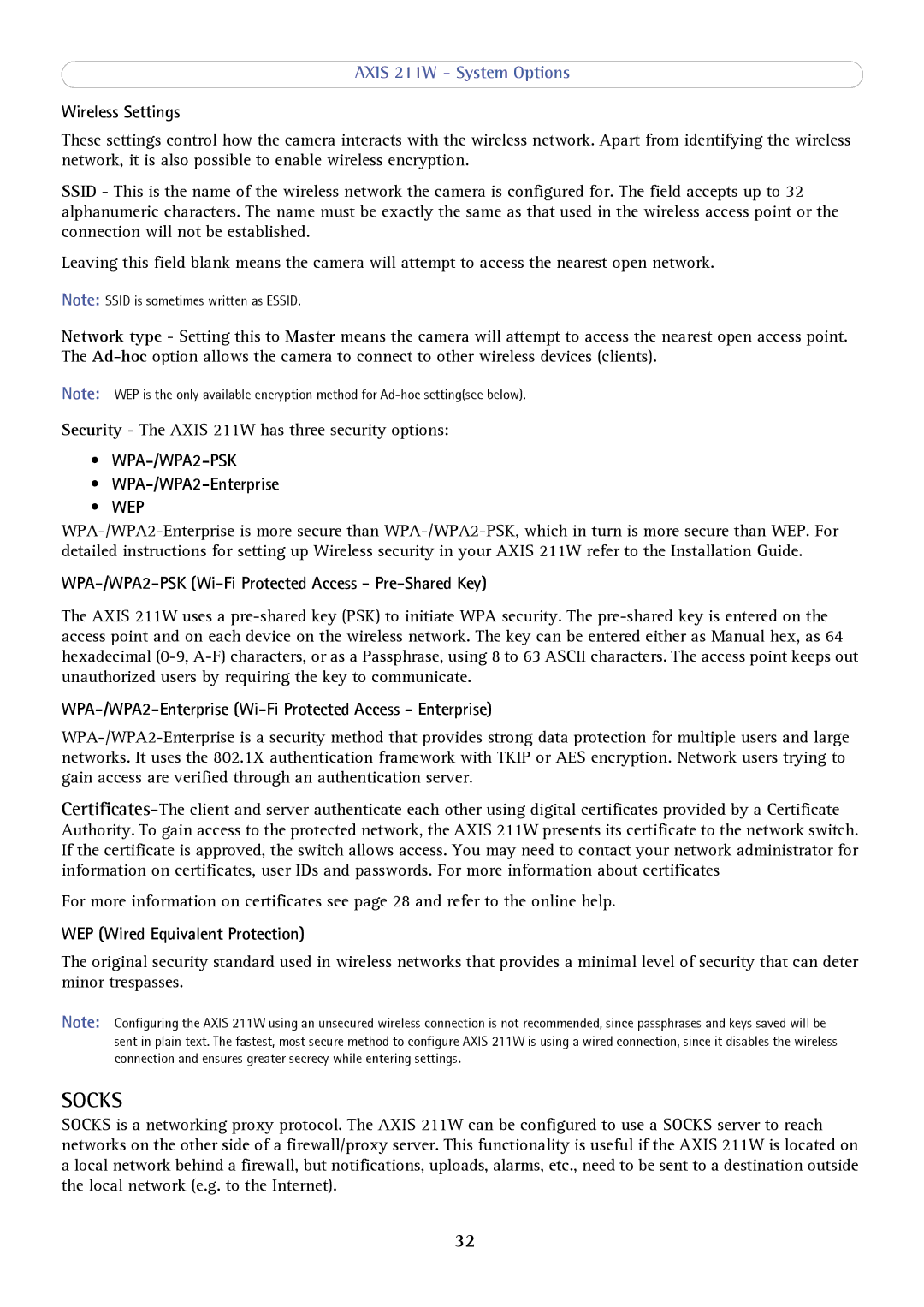AXIS 211W - System Options
Wireless Settings
These settings control how the camera interacts with the wireless network. Apart from identifying the wireless network, it is also possible to enable wireless encryption.
SSID - This is the name of the wireless network the camera is configured for. The field accepts up to 32 alphanumeric characters. The name must be exactly the same as that used in the wireless access point or the connection will not be established.
Leaving this field blank means the camera will attempt to access the nearest open network.
Note: SSID is sometimes written as ESSID.
Network type - Setting this to Master means the camera will attempt to access the nearest open access point. The
Note: WEP is the only available encryption method for
Security - The AXIS 211W has three security options:
•
•WPA-/WPA2-Enterprise
•WEP
WPA-/WPA2-PSK (Wi-Fi Protected Access - Pre-Shared Key)
The AXIS 211W uses a
WPA-/WPA2-Enterprise (Wi-Fi Protected Access - Enterprise)
For more information on certificates see page 28 and refer to the online help.
WEP (Wired Equivalent Protection)
The original security standard used in wireless networks that provides a minimal level of security that can deter minor trespasses.
Note: Configuring the AXIS 211W using an unsecured wireless connection is not recommended, since passphrases and keys saved will be sent in plain text. The fastest, most secure method to configure AXIS 211W is using a wired connection, since it disables the wireless connection and ensures greater secrecy while entering settings.
SOCKS
SOCKS is a networking proxy protocol. The AXIS 211W can be configured to use a SOCKS server to reach networks on the other side of a firewall/proxy server. This functionality is useful if the AXIS 211W is located on a local network behind a firewall, but notifications, uploads, alarms, etc., need to be sent to a destination outside the local network (e.g. to the Internet).
32
